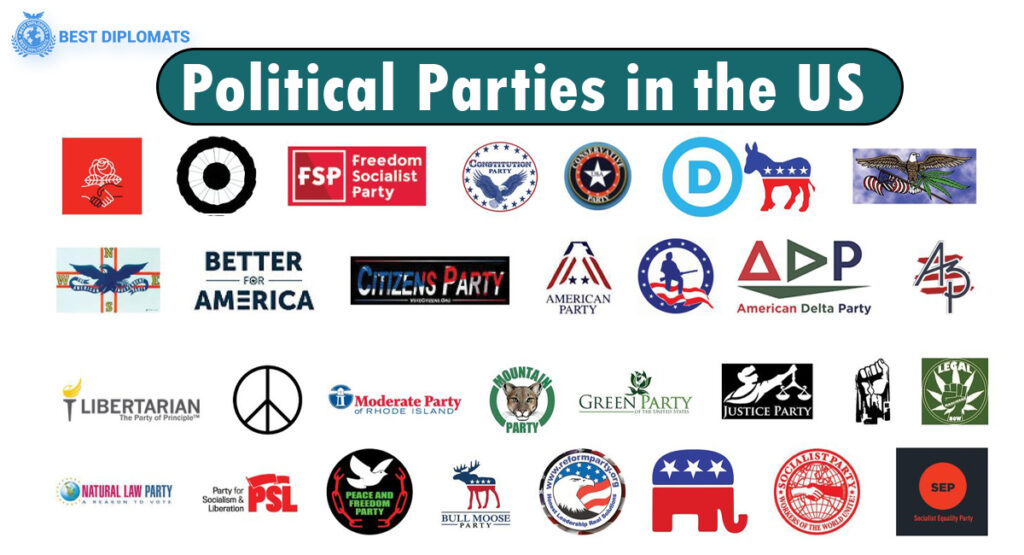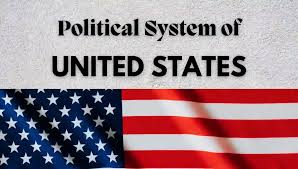The US Political System: A Beginner’s Guide
The United States has a complex political system with many components. This system is designed to balance power and ensure that no single entity has too much control. At its core, the US political system is based on democratic principles, where the government is elected by the people. This guide will break down the key elements of the US political system to help beginners understand how it works.
The Three Branches of Government
The US government is divided into three main branches: the Legislative Branch, the Executive Branch, and the Judicial Branch. Each branch has its own responsibilities and powers, which helps to keep the government balanced and fair.
1. The Legislative Branch
The Legislative Branch is responsible for making laws. It is made up of two houses: the Senate and the House of Representatives. Together, these two houses form the United States Congress.
- The Senate: The Senate has 100 members, with each state having two Senators regardless of its population size. Senators serve six-year terms.
- The House of Representatives: The House has 435 members, with the number of Representatives from each state based on its population. Representatives serve two-year terms.
Both houses must agree on a bill for it to become a law. This process involves debate, amendments, and voting.
2. The Executive Branch
The Executive Branch is responsible for enforcing laws and is headed by the President. The President is also the Commander-in-Chief of the Armed Forces and is responsible for foreign policy.
- The President: The President is elected for a four-year term and can serve a maximum of two terms. The President is responsible for signing bills into law, issuing executive orders, and managing the federal government.
- The Vice President: The Vice President supports the President and steps in if the President cannot perform their duties. The Vice President also presides over the Senate and casts tie-breaking votes.
3. The Judicial Branch
The Judicial Branch interprets laws and ensures they are applied fairly. It is made up of the Supreme Court and lower federal courts.
- The Supreme Court: The Supreme Court is the highest court in the United States. It has nine Justices who are appointed for life. The Court reviews cases to ensure that laws follow the Constitution and resolves disputes between states.
- Lower Federal Courts: These courts handle cases involving federal laws and disputes between states. They include Courts of Appeals and District Courts.
Each branch of government checks and balances the others to prevent any single branch from becoming too powerful.
The Role of Political Parties

Political parties play a crucial role in the US political system. They help organize elections, mobilize voters, and shape public policy. The two major political parties in the US are the Democratic Party and the Republican Party.
1. The Democratic Party
The Democratic Party generally supports progressive policies, such as expanding social services, protecting civil rights, and addressing climate change. Democrats often advocate for a larger role of government in providing healthcare and education.
2. The Republican Party
The Republican Party typically supports conservative policies, such as reducing government spending, promoting free-market economics, and maintaining traditional values. Republicans often focus on tax cuts, deregulation, and strong national defense.
3. Other Political Parties
In addition to the two major parties, there are several smaller parties, such as the Libertarian Party and the Green Party. These parties offer alternative viewpoints and can influence elections and policies.
Political parties nominate candidates for various offices, from local to federal levels, and help to organize campaigns and fundraise.
How Elections Work
Elections are a fundamental part of the US political system. They allow citizens to choose their leaders and have a say in government policies. Here’s a look at how elections work in the US.
1. Types of Elections
- Presidential Elections: Held every four years, presidential elections determine who will be the President and Vice President of the United States. Candidates from each party campaign across the country to win the support of voters.
- Congressional Elections: These elections occur every two years. They determine who will serve in the Senate and the House of Representatives. Senators serve six-year terms, while Representatives serve two-year terms.
- State and Local Elections: These elections decide who will hold positions at the state and local levels, such as governors, mayors, and state legislators. They vary in timing and are important for addressing local issues.
2. The Electoral Process
- Primaries and Caucuses: Before the general election, parties hold primaries and caucuses to select their candidates. Primaries are elections where voters choose their preferred candidate. Caucuses are meetings where party members discuss and select their candidate.
- General Election: In the general election, voters choose between the candidates nominated by each party. The candidate with the most votes wins the election.
- Electoral College: For presidential elections, the Electoral College system is used. Each state has a certain number of electoral votes based on its population. Voters in each state cast their ballots for electors who then vote for the President. A candidate needs a majority of electoral votes to win.
The Constitution and Its Amendments
The US Constitution is the supreme law of the land. It outlines the structure of the government and protects individual rights. The Constitution has been amended several times to address new issues and expand rights.
1. The Constitution
The Constitution was adopted in 1787 and establishes the framework for the federal government. It includes the Preamble, which states the purpose of the document, and seven articles that outline the structure and powers of the government.
2. The Bill of Rights
The first ten amendments to the Constitution are known as the Bill of Rights. These amendments protect fundamental freedoms, such as freedom of speech, religion, and the press.
3. Other Amendments
Since the Bill of Rights, there have been 17 additional amendments. These amendments address various issues, such as abolishing slavery, granting women the right to vote, and limiting presidential terms.
The amendment process requires a proposal by Congress or a constitutional convention, followed by ratification by the states. This process ensures that changes to the Constitution reflect the will of the people.
The Role of Checks and Balances
Checks and balances are a key feature of the US political system. They ensure that no single branch of government becomes too powerful. Each branch has specific powers and responsibilities, and they can check each other’s actions.
1. Legislative Checks
- On the Executive Branch: Congress can override a presidential veto with a two-thirds majority vote. It also approves presidential appointments and can impeach the President.
- On the Judicial Branch: Congress can confirm or reject judicial appointments and amend the Constitution to overturn Supreme Court decisions.
2. Executive Checks
- On the Legislative Branch: The President can veto bills passed by Congress and issue executive orders.
- On the Judicial Branch: The President appoints federal judges, including Supreme Court Justices.
3. Judicial Checks
- On the Legislative Branch: The Supreme Court can declare laws unconstitutional.
- On the Executive Branch: The Supreme Court can review executive actions to ensure they comply with the Constitution.
These checks and balances help to maintain a fair and balanced government, where each branch has a role in governing and ensuring that power is not concentrated in one area.
Conclusion
Understanding the US political system can be challenging, but it is essential for participating in democracy. The system’s design ensures that power is divided and that citizens have a voice in their government. By learning about the branches of government, political parties, elections, and the Constitution, you gain insight into how the US operates and how you can be involved in shaping its future.










